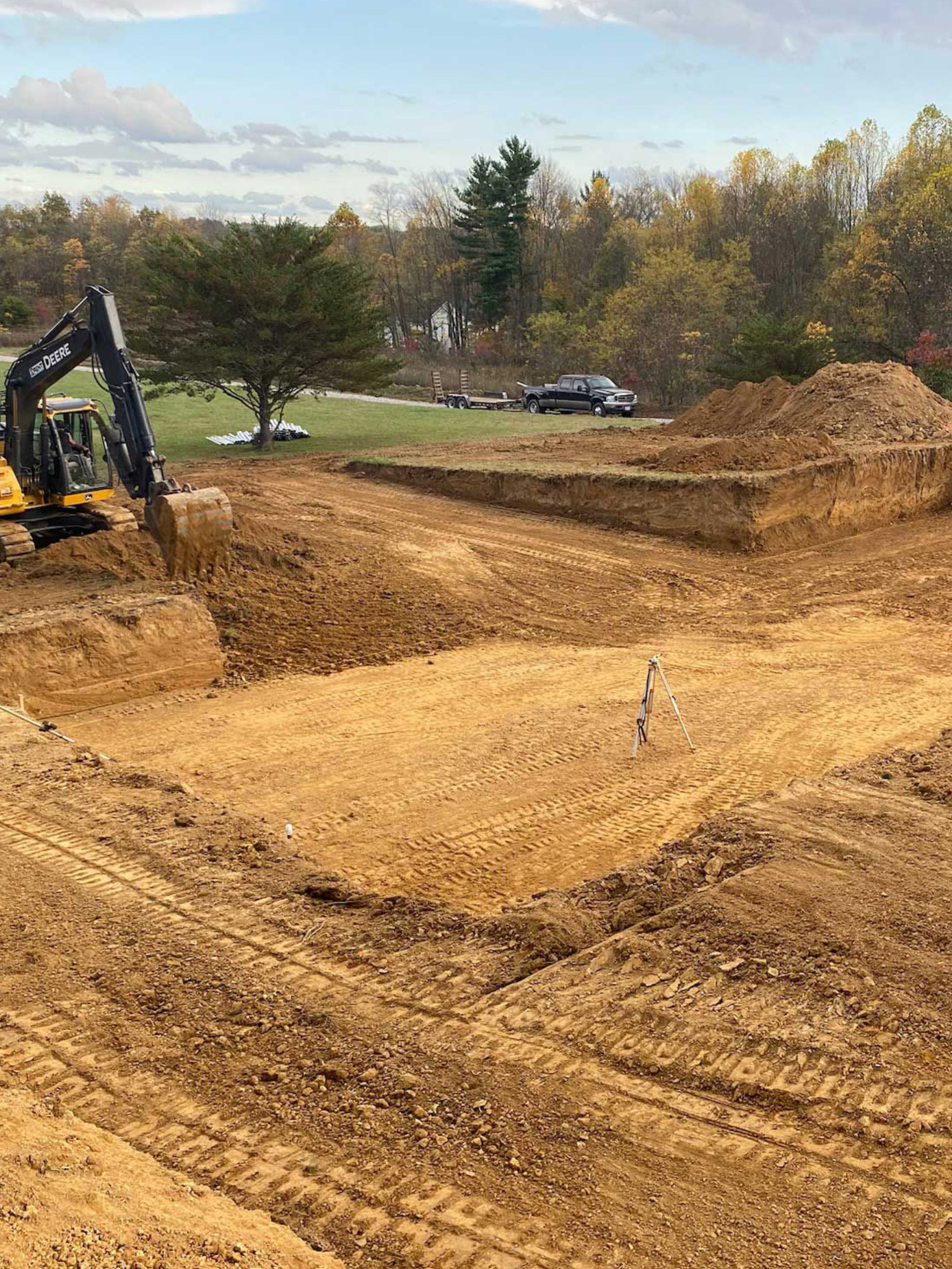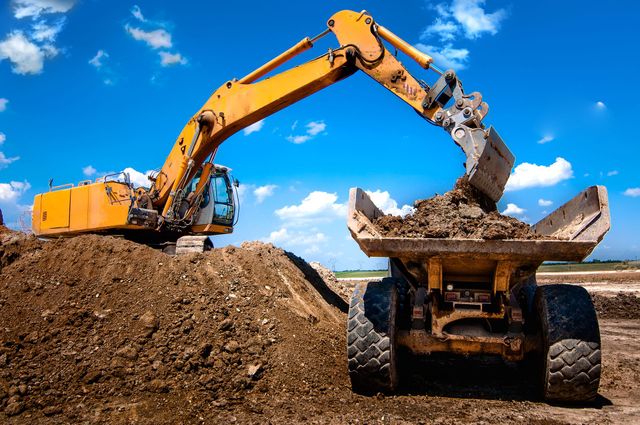Finest Dump Truck Companies in Ohio - Top-Rated Dump Truck Providers
Finest Dump Truck Companies in Ohio - Top-Rated Dump Truck Providers
Blog Article
Introducing the Art of Excavation: Pro Tips for Safe and Effective Excavating
In the world of excavation, the mastery of risk-free and productive excavating is an art type that needs accuracy, adherence, and expertise to established practices. As dirt is transformed and earth is relocated, the ins and outs of excavation expose themselves, requiring an eager understanding of devices, soil make-up, security procedures, and ecological factors to consider. The experience required to navigate these components successfully can imply the difference between an effective excavation job and a potential disaster. By unwinding the layers of this detailed procedure, a world of insights and approaches awaits those seeking to boost their excavation skills to brand-new heights.
Significance of Correct Equipment
To ensure the safety and security and effectiveness of any type of excavation task, utilizing the suitable devices is vital. Excavation tasks differ in scope and complexity, ranging from tiny property landscape design work to massive building and construction tasks.
Excavators are fundamental pieces of equipment in any kind of excavating procedure. These functional equipments can be found in numerous dimensions to match various job needs. Miniature excavators are ideal for smaller sized jobs, while larger excavators tackle more extensive tasks efficiently. Backhoes are another crucial tools type, integrating the features of a loader and an excavator in one device. They are valuable for jobs calling for flexibility and maneuverability.
Aside from excavators, other vital devices includes dump vehicles, trenchers, and excavators. Unload trucks are crucial for eliminating and transferring excavated products, while trenchers are made use of for digging slim and deep trenches. Excavators succeed in tasks that call for pushing huge quantities of dirt or debris. By buying the suitable tools, excavation projects can be completed securely, in a timely manner, and with precision.
Comprehending Dirt Composition
A comprehensive grasp of dirt make-up is fundamental for implementing excavation projects with precision and safety and security. Understanding the various sorts of dirt is vital as it straight affects excavation techniques, tools option, and overall job performance. Dirt make-up normally is composed of 4 main components: sand, silt, clay, and organic issue. Each component has one-of-a-kind buildings that influence just how soil reacts to excavation processes.
Sand particles are the biggest and give good water drainage but offer little cohesion. Silt fragments are smaller than sand yet bigger than clay, supplying modest water drainage and communication. Clay bits are the smallest and offer high cohesion but inadequate water drainage. Raw material, such as rotting plant product, impacts soil fertility and security.
Prior to beginning excavation, conducting soil tests to establish its structure and qualities is necessary. This info helps in selecting the ideal devices, executing precaution, and establishing excavation approaches tailored to the specific dirt conditions - lancaster excavation. By comprehending soil structure, excavation professionals can boost project outcomes while ensuring safety and adherence to finest practices
Precaution and Methods
Understanding soil make-up is the foundation whereupon security actions and procedures for excavation tasks are built, guaranteeing the health of workers and the success of the venture. When it involves safety during excavation, there are several crucial measures that should be implemented to mitigate risks and avoid accidents.
Firstly, before any type of excavating starts, a comprehensive assessment of the site ought to be carried out to check determine any kind of prospective dangers such as underground utilities, unstable soil conditions, or close-by structures that could position a risk. It is vital to have a competent person oversee the excavation procedure to guarantee that all safety and security methods are adhered to purely.
Furthermore, all workers involved in the excavation should be correctly trained in risk-free excavating methods and the appropriate operation of equipment. By look here sticking to these safety steps and protocols, excavation projects can be finished successfully and without occurrence.
Efficient Excavation Planning
When embarking on an excavation job, meticulous preparation is important to make certain effectiveness, safety, and effective results. Reliable excavation planning includes several crucial actions that are vital for the smooth implementation of the job.
As soon as the site evaluation is full, the next action is to develop a clear timeline and timetable for the excavation tasks. This consists of identifying the series of tasks, devices needs, and manpower allowance. Proper scheduling assists avoid delays and makes sure that the task remains on track.

Moreover, communication amongst all staff member is paramount during the planning stage. Clear regulations, routine updates, and efficient sychronisation are necessary for an effective excavation task. By spending time and effort in meticulous planning, excavation groups can significantly enhance productivity, decrease threats, and attain effective outcomes.

Handling Environmental Factors To Consider
With boosting emphasis on ecological sustainability in building practices, taking care of ecological considerations has actually become an important aspect of excavation jobs. Excavation activities have the possible to affect the surrounding atmosphere with soil erosion, sediment runoff, habitat disruption, and contamination of water resources. To mitigate these threats, it is important to execute ideal practices that focus on environmental management.

In addition, appropriate waste management is essential to stop dirt and water contamination. Carrying out treatments for the disposal site web of harmful materials, recycling of waste materials, and reducing making use of hazardous chemicals can considerably decrease the environmental impact of excavation jobs. By integrating these practices into excavation preparation and implementation, building business can make certain that their tasks are not just risk-free and productive but additionally eco accountable.
Final Thought
In final thought, mastering the art of excavation calls for a thorough understanding of correct devices, soil composition, safety and security actions, and efficient planning. By adhering to these guidelines and considering ecological aspects, excavations can be carried out securely and effectively. It is essential to focus on security and productivity in every excavating job to make sure successful end results.
As soil is turned and planet is moved, the intricacies of excavation disclose themselves, demanding an eager understanding of equipment, dirt composition, security procedures, and environmental factors to consider.To ensure the safety and security and efficiency of any kind of excavation project, using the suitable tools is critical.A thorough grasp of dirt composition is essential for implementing excavation jobs with accuracy and safety. Comprehending the various types of soil is critical as it directly influences excavation methods, devices option, and overall project effectiveness. By recognizing soil structure, excavation specialists can enhance job end results while ensuring safety and adherence to finest practices.
Report this page